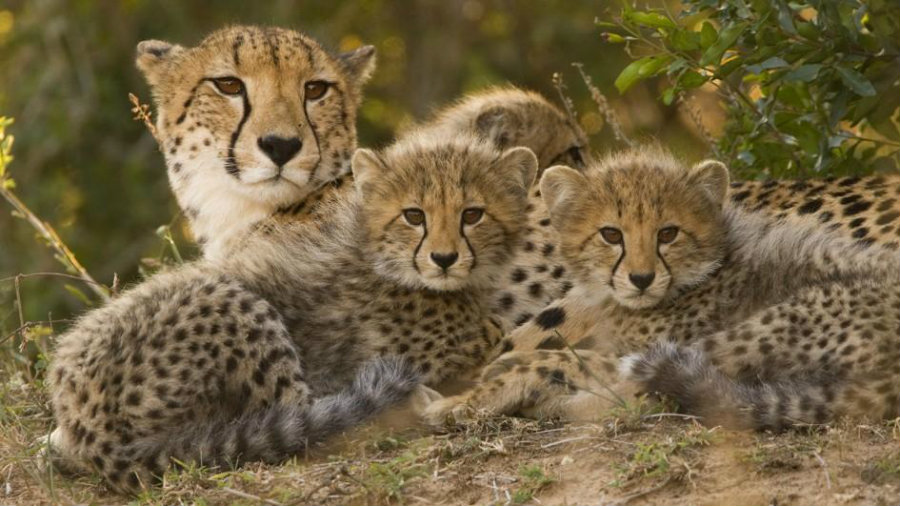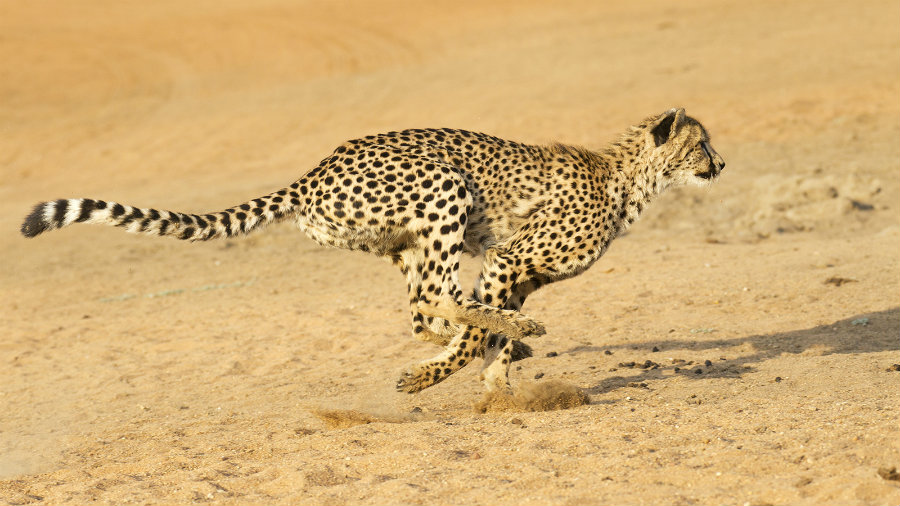Cheetahs could be facing extinction if their numbers continue to fall. Landscape-wide conservation action is needed to save the species to stop the traffic of cheetah inside and outside of protected areas.
A recent report shows how cheetah populations around the world have decreased dramatically. Just 7,100 cheetahs remain globally, mainly due to human-wildlife conflict.

The assessment was led by Zoological Society of London (ZSL), Panthera, and Wildlife Conservation Society (WCS) and the results were published in the Journal of Proceedings of the National Academy of Science.
Cheetahs are the fastest land animals in the world, making the species a marvel of evolution. They have slender, long-legged body built for speeding. Their fur is tan in color with black spots all over their bodies to help them camouflage when hunting.
Compared to other wild cats, cheetahs are small. The species eat mainly gazelles, wildebeest calves, impalas and smaller hoofed animals. Human overhunting of their preys, trafficking, and exotic animal trade are leading cheetahs toward extinction.
The cheetah has been displaced from several of its areas, especially from Asia were about 50 individuals remain in an isolated location in Iran. Of its historic range, cheetahs have been driven out 91 percent. Zimbabwe’s cheetah population has plummeted from 1,200 to a maximum of 170 animals in just 16 years, representing 85 percent of the country’s cheetahs.
Due to the current critical numbers of the world’s fastest land animal, authors of the report and cheetah conservationists are requesting the International Union for Conservation of Nature Red List of Threatened Species to move cheetahs from Vulnerable to Endangered. This action would focus attention on the species since international conservation efforts typically prioritize their work to wildlife classified as Endangered because the animal could be facing extinction soon.
“This study represents the most comprehensive analysis of cheetah status to date. Given the secretive nature of this elusive cat, it has been difficult to gather hard information on the species, leading to its plight being overlooked. Our findings show that the large space requirements for cheetah, coupled with the complex range of threats faced by the species in the wild, mean that it is likely to be much more vulnerable to extinction than was previously thought,” said Dr. Sarah Durant, ZSL/WCS lead author and Project Leader for the Rangewide Conservation Program for Cheetah and African Wild Dog.
Durant added that ZSL and WCS have been working with several state governments and the cheetah conservation community to raise awareness about frameworks for action to save the species. The only things between preserving cheetahs or condemning the species to its extinction are funds and resources.
Cheetahs living outside protected areas are harder to protect from poaching activities
According to the report, 77 percent of the cheetah’s habitat falls outside of protected areas, exposing the species to less law enforcement protection, which amplifies cheetahs vulnerability to human pressures.
There have been a few efforts to protect cheetahs recently. For example, during the CITES CoP17 meeting in Johannesburg, it was agreed to decrease the illegal flow of live cats in general which are trafficked out of the Horn of Africa region. Among the measures, people advertising cheetahs for sale on social media will be reported and taken down from those networks.

Trafficking of cubs is highly demanded in Gulf states. Young cheetahs can cost up to $10,000 on the black market, making the trade of exotic pets an attractive business. According to the Cheetah Conservation Fund, around 1,200 cheetah cubs have been trafficked out of Africa over the past decade, but around 85 percent of them died during the journey.
Still, many other efforts are needed to protect cheetahs since they are at risk even within protected areas. Even inside guarded parks and reserves, the fast land mammals are vulnerable to illegal trafficking of their parts, trade of exotic pets, habitat loss and prey loss due to human overhunting.
Concerted actions are vital to reverse the ongoing declines of the species to stop the accelerating human land use and protect cheetahs habitat.
Panthera’s Cheetah Program Director, Dr. Kim Young-Overton said that the paradigm related to cheetahs extinction had changed completely after the release of the ZSL/WCS report. Young-Overton continued and stated that it is clear that securing protected areas alone is not enough to increase cheetah’s numbers. Thus, conserving protected and unprotected landscapes are vital.
Scientists are asking for new strategies to safeguard the species including landscape-level efforts that transcend national borders.
Cheetahs need better coordination with existing regional conservation efforts and a holistic conservation approach to incentivise protection of the species by local communities and transnational governments. These actions have to be done alongside sustainable coexistence between cheetahs and humans if we want to save the species from extinction.
Using models to calculate how many cheetahs are necessary to protect the species
The report shows models scientists used to explore the relationship between extinction risk and cheetah population size. They considered different scenarios to predict demographic trends, including proportions of land protected and the growth rate on unprotected lands.
The study assumes that populations were stable when they live in large protection areas. Based on that information, scientists suggested that cheetahs living inside protected parks need to increase their numbers to compensate the small numbers of the species found in unprotected regions.
Durant admitted that growth rates within protected areas had to be unrealistically high to compensate fully for declining cheetah populations outside protected regions. She added that it will be better to focus on increasing cheetah population in unprotected areas.
Source: Phys.org
